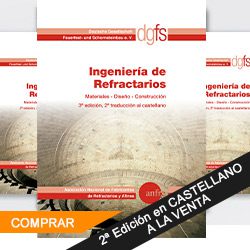Attendees discuss how market participants will secure supply for the coming year, and how prices are expected to perform going forward.
Raw material supply and market price performance were once again the leading topics of conversation among delegates at the 61st International Colloquium on Refractories in Aachen, Germany, in September.
As was the case in 2017, raw materials were under the spotlight at this year’s refractories event.
Considering the restrictions on mining and production operations in China – the largest producer of several key refractory raw materials such as bauxite, fused alumina, magnesia and graphite – attendees in Aachen are assessing what the future holds for supply.
«It’s the second year in a row that we’ve talked about, essentially, only raw materials,» one user said on the sidelines of the event. «If it’s not about bauxite, it’s about magnesia or it’s about alumina. But there is no running away from it.»
«The only consolation is that everyone is in the same situation because the changes are structural. The handicap is our common denominator right now,» another delegate said.
Consumers have actively been trying to respond to the sourcing issues in China by seeking alternative origins or by working with alternative materials.
This has not always led to workable solutions, however, because the tightness has, in some cases, spread to multiple markets, generating short supply and rising prices across the board.
«When bauxite was getting short and expensive last year, consumers tried to shift to andalusite instead,» one buyer said. «Of course, andalusite ended up being short and expensive too. What we hope is not having more of the same next year.»
Fastmarkets IM assessed the price of calcined bauxite 85% at $420-435 per tonne, fob Xingang, on September 20, compared with $410-420 per tonne on September 6.
The price of calcined bauxite 86% reached $435-445 per tonne fob Xingang on the same date, up from $420-440 per tonne earlier in the year.
The buyer pointed to similar situations with white-fused alumina and tabular alumina – when the rising demand for the first triggered a shortage of the latter as well during 2017.
The ongoing perception of impending shortage could also be a factor supporting market prices going forward, several attendees said, with uncertainty becoming the new norm.
«How much are the supply issues overplayed when it comes to contracting?» one trader said. «We know of China and of how serious what is happening there, don’t get me wrong. But is this creating knee-jerk reactions by market players? That may be.»



